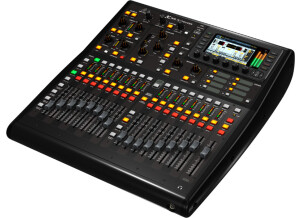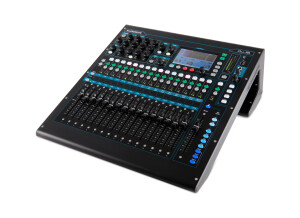Fiche technique
- Fabricant : PreSonus
- Modèle : StudioLive 16.4.2
- Série : StudioLive
- Catégorie : Consoles numériques
- Autres dénominations : studiolive 16 4 2, studiolive1642, studiolive16 4 2, studio live 16 4 2, studiolive 1642, studiolive, studio live, studiolive 16, studiolive16
- 16 mic/line inputs with high-headroom Class A XMAX™ mic preamplifiers
- 4 subgroups
- Stereo/mono main out
- 6 auxiliary mixes
- 32-in/18-out FireWire digital recording interface (24-bit/44.1 kHz and 48 kHz)
- Studio One Artist Digital Audio Workstation software for Mac® and PC
- Capture™ 1.1 recording software for Mac® and PC
- StudioLive Remote mixer-control software for iPad® available free from Apple App Store
- QMix™ aux-control software for iPhone® and iPod touch® available free from Apple App Store
- Direct recording interface compatible with Logic®, Nuendo, Cubase, Sonar™, Digital Performer™, Ableton™ Live, and more
- 16 channel strips
- Trim control with –20 to +20 dBV line/-15 to +65 dBu mic gain range (80dB!)
- +48V phantom power switch for condenser microphones
- FireWire Input Select
- 100 mm precision faders
- Lighted Solo and Mute buttons
- Access to Fat Channel functions
- 15-LED ladder metering + clip LED
- Analog ¼" insert (rear panel)
- 4 subgroup buses, each with:
- Solo
- Mute
- Access to Fat Channel functions (except high-pass filter and phase reverse)
- 6 aux sends, each with
- Solo
- Pre/post-fader send
- Output-level control
- Access to Fat Channel functions (except phase reverse)
- Mix and Mix/Pan Fat Channel metering
- Available sources: Channels 1-16, FXA Return, FXB Return
- 2 internal effects sends, each with:
- Mute
- Pre/post-fader send
- Output-level control
- Access to Fat Channel (except phase reverse)
- Effects-send Select for Fat Channel metering
- Mix button for aux-bus mixing and Fat Channel metering
- Master Section
- Aux Input A and B
- Level Control and Select (Fat Channel metering) switch
- Access to all Fat Channel functions (except phase reverse)
- Talkback System
- Mic Level control
- Output Select ( Aux 1-2, 3-4, 5-6, Main)
- Talk button
- Rear-panel XLR mic input with level control and continuous 48V phantom power
- 2 Track In
- Level control
- Tape Input to Mains button
- FireWire source on/off
- Solo Bus
- Cue Mix volume control
- PFL/AFL and Solo In Place (SIP) buttons
- Monitor Bus
- Headphone-output level control
- Control-room monitor-level control
- Solo Bus to Monitor button
- Tape Input to Monitor button
- Main L/R FireWire Return to Monitor button
- Main Mix to Monitor button
- Fat Channel with rotary encoders:
- Pan with dedicated 15-LED display
- Stereo link for input channels, aux buses, and subgroups
- Phase reverse (main channels only)
- High-pass filter: 6 dB/oct., sweepable from Off to 1 kHz (main channels and aux's only)
- 4-band semi-parametric equalization
- Low EQ: sweepable from 36 Hz to 465 Hz, ±15 dB, switchable shelf or peaking
- Low Mid EQ: sweepable from 90 Hz to 1.2 kHz, ±15 dB, switchable 0.55/2.0 Q
- High Mid EQ: sweepable from 380 Hz to 5 kHz, ±15 dB, switchable 0.55/2.0 Q
- High EQ: sweepable from 1.4 kHz to 18 kHz, ±15 dB, switchable shelf or peaking
- Gate: Threshold 0 to –84 dB; Rate: 2 to 0.05 sec
- Compressor: Threshold -56 to 0 dB, Ratio 1:1 to 14:1, Attack 0.2 to 150 ms, Release 40 to 1000 ms, Makeup Gain 0 to 28 dB, Soft Knee switch, Auto Mode with 10 ms Attack and 150 ms Release
- Limiter: 0 dBFS Threshold, ∞:1 Ratio
- Output Assign: 4 subgroups and main with post-EQ/post-dynamics option
- All settings can be copied among channels and saved as user presets.
- 50 channel-strip presets for drums, bass, guitars, keyboards, and vocals
- 2 internal digital effects-processors, each with 50 customizable reverb and delay presets
- 4 dual-mono (eight channels), 31-band graphic equalizers, each assigned to a specific bus: Main Left, Main Right, and Aux 1 through 6
- Scene Store and Recall
- Global Scene Storage: all current StudioLive settings
- Up to 80 at a time
- Automatic Global AutoStore
- Individual channel-strip Scene storage
- Up to 48 at a time, plus…
- 50 factory presets for instruments and vocal
- Copy and Paste between channels
- Customizable naming (for example, "Saturday Gig" or "Main Worship Service")
- Global Scene Storage: all current StudioLive settings
- Lockout mode to keep inspired amateurs from changing your settings
- Metering/Displays
- 16 x 16- LED Fat Channel matrix:
- Pre-dynamics/pre-fader input
- Post-dynamics/post-fader output
- Gain reduction
- Aux 1-6 and EFX A/B output
- Fader-position recall
- 8 x 15-LED main meter bank
- Selected channel level
- Selected channel gain reduction
- Sub buses 1 to 4
- Main stereo outputs
- 15-LED horizontal Pan/Balance display
- 64 x 194 LCD matrix
- Effects parameters
- Scene creation, storage, and recall
- System menus
- 2-digit Channel Selected display
- 16 x 16- LED Fat Channel matrix:
- Input/Output
- 16 main inputs, each with XLR mic, ¼" line, and ¼" inserts
- 2 ¼" stereo (L/R) aux inputs
- 1 XLR talkback-mic input with phantom power and level control
- Unbalanced RCA stereo (L/R) tape inputs and outputs
- XLR stereo (L/R) main outputs with level control
- ¼" stereo (L/R) main outputs
- XLR mono output with level control
- ¼" stereo (L/R) control-room outputs
- ¼" Headphone output
- 4 ¼" subgroup outputs
- 6 ¼" aux outputs
- 16 pre-insert, balanced direct outputs, Ch. 1-8 and 9-16 (DB25 sockets)
- S/PDIF digital out
- 2 FireWire 400 ports
- Digitalia
- High-definition analog-to-digital converters (118 dB dynamic range)
- Unlimited-headroom, 32-bit floating point, digital mixing and effects processing
- Internal sample frequency 44.1 kHz and 48 kHz
- Physical
- Rugged, non-flex steel chassis
- 100 mm long-throw faders
- Military-grade, quick-touch buttons
- BNC 12V lamp socket
- Optional dust covers available
- Software bundle for Mac® and Windows® includes:
- PreSonus Studio One® Artist digital audio workstation
- PreSonus Capture™ live-recording software
- PreSonus Universal Control with Virtual StudioLive™ bidirectional mixer-control software
- Free downloadable software from the Apple App Store provides wireless remote control, including:
- PreSonus StudioLive Remote for iPad®
- PreSonus QMix™ for iPhone® and iPod touch®
Computer system requirements:
Below are the minimum computer-system requirements for Virtual StudioLive.
Windows- Windows® Vista x64/x86 SP2, Windows 7 x64/x86 SP1, Windows 8 x64/x86
- Intel® Core™ Duo or AMD Athlon™ X2 processor (Intel Core 2 Duo or AMD Athlon X4 or better recommended)
- 2 GB RAM (4 GB or more recommended)
- Mac® OS X 10.6.8 or later
- Intel Core Duo processor (Intel Core 2 Duo or Core i3 or better recommended)
- 2 GB RAM (4 GB or more recommended)
- PreSonus Universal Control 1.5.3 or later
- IEEE 1394 FireWire 400 Port
- Internet connection recommended
- DVD-ROM drive
- Internal or external 7200 RPM storage drive highly recommended
- Monitor with 1024x768 resolution
|
Microphone Preamp 1-16 (XLR Balanced) |
|
|
Type |
XLR Female, Balanced |
|
Frequency Response to Direct Output |
20 Hz to 40 kHz ±0.5 dBu |
|
Frequency Response to Main Output |
20 Hz to 20 kHz ±0.5 dBu |
|
Input Impedance (Balanced) |
1 kΩ |
|
THD to Direct Output |
< 0.005%, +4 dBu, 20-20 kHz, unity gain, unwtd |
|
THD to Main Output |
<0.005%, +4 dBu, 20-20 kHz, unity gain, unwtd |
|
EIN to Direct Output |
+125 dB unwtd, +130 dB A-wtd |
|
S/N Ratio to Direct Output |
-97 dB |
|
S/N Ratio to Main Output |
-94 dB |
|
Common Mode Rejection Ratio |
+65 dB |
|
Gain Control Range |
-16 dB to +67 dB (± 1 dB) |
|
Maximum Input Level (unity gain) |
+16 dBu |
|
Phantom Power |
+48 VDC |
|
Line Inputs |
|
|
Type |
¼" TRS Female, balanced mono |
|
Frequency Response to Direct Outputs |
10-40 kHz, 0 / -0.5 dBu |
|
Frequency Response to Main Outputs |
20-20 kHz, ±0.5 dBu |
|
Input Impedance |
10 kΩ |
|
THD to Direct Output |
<0.0007%, +4 dBu, 20-20 kHz, unity gain, unwtd |
|
THD to Main Output |
<0.005%, +4 dBu, 20-20 kHz, unity gain, unwtd |
|
S/N Ratio to Direct Output |
-105 dB |
|
S/N Ratio to Main Output |
-94 dB |
|
Gain Control Range (±1 dB) |
-20 dB to +20 dB |
|
Maximum Input level (unity gain) |
+22 dBu |
|
Tape Inputs |
|
|
Type |
¼" TRS Female, balanced mono |
|
Maximum Input Level |
+10 dBu |
|
Auxiliary Inputs |
|
|
Type |
¼" TRS Female, balanced (2 stereo pairs) |
|
Maximum Input Level |
+22 dBu |
|
Main Outputs |
|
|
Type |
Male, balanced (stereo pair); ¼" TRS Female, balanced (stereo pair); XLR Male, balanced (mono) |
|
Rated Output Level |
+24 dBu |
|
Output Impedance |
100Ω |
|
Aux Outputs |
|
|
Type |
¼" TRS Female, balanced (mono) |
|
Rated Output Level |
+18 dBu |
|
Output Impedance |
100Ω |
|
Subgroup Outputs |
|
|
Type |
¼" TRS Female, balanced (mono) |
|
Rated Output Level |
+18 dBu |
|
Output Impedance |
100Ω |
|
Tape Outputs |
|
|
Type |
RCA Female, unbalanced (stereo pair) |
|
Rated Output Level |
+18 dBu |
|
Output Impedance |
100Ω |
|
Control Room Outputs |
|
|
Type |
¼" TRS Female, balanced (stereo pair) |
|
Rated Output Level |
+18 dBu |
|
Output Impedance |
100Ω |
|
System Crosstalk |
|
|
Input to Output |
-90 dBu |
|
Adjacent Channels |
-87 dBu |
|
Noise Gate / Expander |
|
|
Threshold Range |
-84 dB to 0 dB |
|
Attack Time |
0.5 ms |
|
Release Time |
0.05s to 2s |
|
Expander Attenuation Range |
2:1 |
|
Noise Gate Attenuation Range |
∞ |
|
Compressor |
|
|
Threshold Range |
-56 dB to 0 dB |
|
Ratio |
1:1 to 14:1 |
|
Attack Time |
0.2 ms to 150 ms |
|
Release Time |
40 ms to 1000 ms |
|
Auto Attack and Release |
Attack = 10 ms, Release = 150 ms |
|
Curve Types |
hard and soft knee |
|
EQ |
|
|
Type |
2nd-order shelving filter (Q = 0.55) |
|
Low (Lowpass or Bandpass) |
36 to 465 Hz, ±15 dB |
|
Low Mid |
90 Hz to 1.2 kHz, ±15 dB |
|
High Mid |
380 Hz to 5 kHz, ±15 dB |
|
High (Highpass or Bandpass) |
1.4 kHz to 18 kHz, ±15 dB |
|
Digital Audio |
|
|
ADC Dynamic Range (A-wtd, 48 kHz) |
118 dB |
|
DAC Dynamic Range (A-wtd, 48 kHz) |
118 dB |
|
FireWire |
S400, 400 Mb/s |
|
Internal Processing |
32-bit, floating point |
|
Sampling Rate |
44.1, 48 kHz |
|
A/D/A Bit Depth |
24 |
|
Reference Level for 0 dBFS |
+18 dBu |
|
Clock |
|
|
Jitter |
<20 ps rms (20 Hz - 20 kHz) |
|
Jitter Attenuation |
>60 dB (1 ns in ≈ 1 ps out) |
|
Power/Environmental |
|
|
Connector |
IEC |
|
Input-Voltage Range |
100 to 240V, 50-60 Hz |
|
Power Requirements (continuous) |
100W |
|
Temperature Range |
0-40 degrees Celsius |
|
Physical |
|
|
Length |
22.35 inches (568.06 mm) |
|
Width (chassis only) |
17.22 inches (437.40 mm) |
|
Width (with rack ears) |
19 inches (482.60 mm) |
|
Maximum Height |
6.90 inches (175.26 mm) |
|
Weight |
23 lbs. |
Distribué par Algam / La boîte noire du Musicien
News
Tutoriels et astuces
Vidéos
Avis utilisateurs
Polyvalente, mais fragile
Publié le 27/01/22 à 13:45Bonne table de mixage polyvalente mais assez complexe dans son utilisation. Donc, manuel obligatoire pour l'utilisation des effets, compresseur, etc...
Parfait pour enregistrer vos tubes dans votre salle de musique ou votre répétition. En live, parfait aussi pour un groupe.
Dommage que le sous groupe soit de 4 sorties seulement. 2 de plus aurait été top.
L'enregistrement avec son logiciel est simple d'utilisation.
Le gros hic est la carte son intégrée qui nous a lâchée 2 fois.
La réparation nous coûte trop cher.
Nous pensons à acheter une carte son externe.
Complète et riche en auxiliaire
Publié le 18/12/21 à 21:14Ergonomie général très sympa .
Écran clair et intéressant a l'utilisation.
Portard costaud .
Qualité du son et durabilité des faders.
Son type ou transparent selon moi.
Eq intéressant. Table solide et fiable a l'usage.
Je la recommande pour. Home studio et pour du live.
On la retrouve d'ailleurs souvent e. Prestation et c'est pas pour rien sûrement..
Une Bonne Console numerique
Publié le 16/09/19 à 22:54Très bon préamp meilleurs que la x32 à mon gout. Les softs fournis sont Excellents.
Enregistrement multi piste bluffant.
Les -
Potars non motorisés
Effets bof bof. Mais on peut facilement ajouter une bonne boite d'effet.
En résumé avec une boite d'effet externe très bon son.
Pour ma part je n ai pas eu de pb de fiabilité.
BUG à répétition (défaut de fabrication) + réparation très salé, une honte !!
Publié le 07/05/19 à 19:50Sur la conception on va dire qu'au départ il n'y a pas eu vraiment de soucis, l'ergonomie et bien, depuis on voit des tables mieux pensées, mais elle était dans les premières donc on lui pardonne. Le son relativement bon, les presets aidant pas mal les groupes sans sondier dans leurs bagages.
Par contre nous allons parler de la fiabilité de cette table de mixage, Presonus a conçu cette table sans ventilateur tout d'abord, donc ça chauffe ! et puis au bout de quelques années, et bien un gros bug s'installe, on...…
Sur la conception on va dire qu'au départ il n'y a pas eu vraiment de soucis, l'ergonomie et bien, depuis on voit des tables mieux pensées, mais elle était dans les premières donc on lui pardonne. Le son relativement bon, les presets aidant pas mal les groupes sans sondier dans leurs bagages.
Par contre nous allons parler de la fiabilité de cette table de mixage, Presonus a conçu cette table sans ventilateur tout d'abord, donc ça chauffe ! et puis au bout de quelques années, et bien un gros bug s'installe, on parle de freeze en américain sur les forums : en fait la table lorsqu'elle est branchée en autonome sans être relié à un ordinateur, brusquement elle émet un buzz dans les enceintes puis toutes les lumières de la table reste figé, plus de son, elle est bloquée. On l'éteint puis on la rallume, elle marche et de nouveau au bout de quelques minutes rebelote.
On l'emmène chez le marchand chez qui on a l'habitude d'aller, il fait un devis et là surprise du chef : 449 euros pour changer la carte DSP.
Après quelques recherches sur de multiples forums, vidéos youtube etc... on s'aperçoit qu'il s'agit d'une panne courante chez Presonus. Voir même je dirais un défaut de fabrication. C'est là que commence pour nous l'interrogation suivante, ou le pétage de plombs comme vous voulez : pourquoi Presonus étant informé de la panne ne fait pas le nécessaire pour changer la défaillance comme chez les constructeurs automobiles par exemple. Et bah non ! 450 euros de facture, une honte pour une table Achetée 1400 euros. Si j'ai un conseil à vous donner, passer votre chemin, pour moi Presonus c'est terminé.......
Consoles numériques concurrents
Autres consoles numériques PreSonus
-
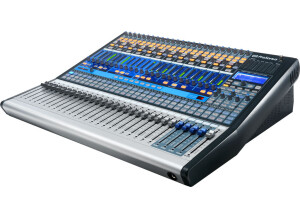
StudioLive 24.4.2
Console numérique
-
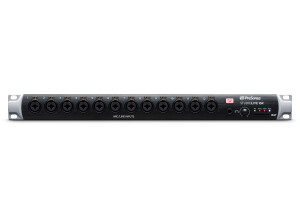
StudioLive 16R
Console numérique
816 € neuf (8 offres)620 € d'occasion (2 offres) -
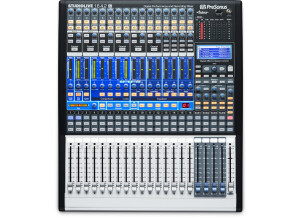
StudioLive 16.4.2AI
Console numérique
-
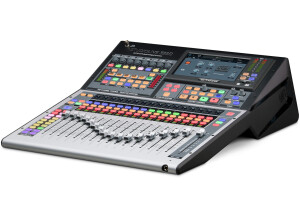
StudioLive 32SC
Console numérique
1 713 € neuf (5 offres) -
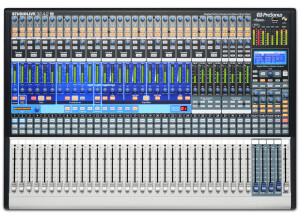
StudioLive 32.4.2AI
Console numérique
2 808 € neuf (2 offres)900 € d'occasion (1 offre) -
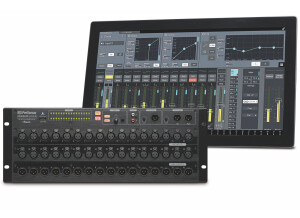
StudioLive RM16AI
Console numérique
-
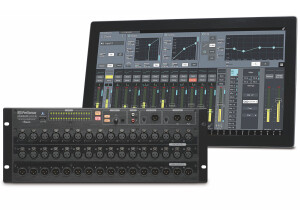
StudioLive RM32AI
Console numérique
-
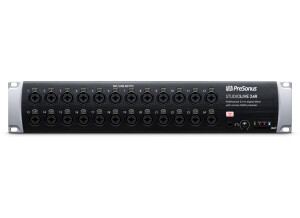
StudioLive 24R
Console numérique
1 249 € neuf (8 offres) -
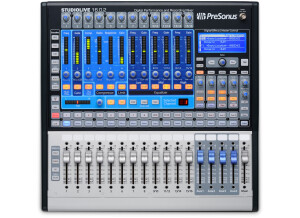
StudioLive 16.0.2
Console numérique
929 € neuf (13 offres)300 € d'occasion (4 offres) -

StudioLive 24
Console numérique
Autres catégories dans Tables de Mixage
On en parle dans les forums...
- Problème de voix sur console Presonus 16/4/2
- ecran LCD en panne
- Connexion PRESONUS 16.4.2 Classic vers MAC disparue, Universal Control. / Capture
- Sub sur la Sudiolive
- Firewire
- Quel cablage pour les Aux avec Presonus Hp60?
- Problèmes d'alimentation ?
- pour les chanteurs?
- connexion wifi ipad studiolive
- Controle via Tablette/ Bruit vue metre















